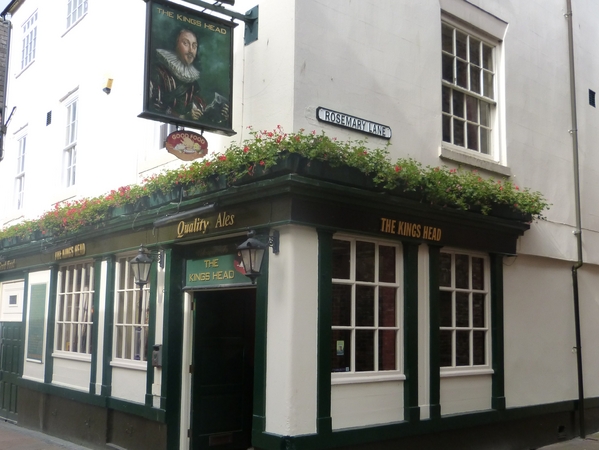Up hill, down ale on a railway masterpiece that crosses the Pennines to Scots border
Added: Thursday, September 26th 2013
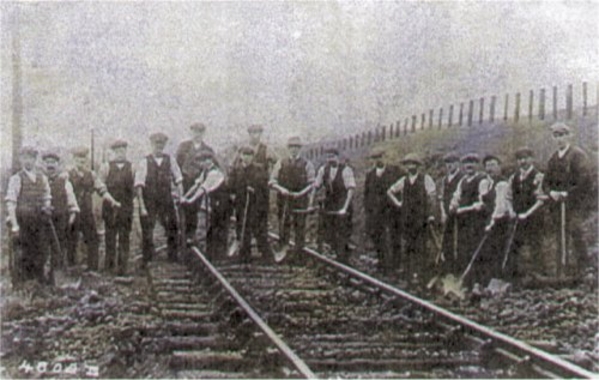
Beer has always been at the heart of the Settle and Carlisle railway. This is due to the number of fine pubs that water one of the most beautiful train journeys in England but it’s also a powerful link to the origins of the line.
Around 6,000 navvies were required for this great feat of engineering and entire communities with post offices and schools were built to house them. One of these small townships, known as Ten Huts, had six fully licensed premises, including the Sportsman’s Inn, Wonder Inn, Bridge Inn Tavern, Pavilion Inn, the Anvil and Brookside Inn. The Brookside had its own brewery while John Brown’s brewery took over a weaving mill to provide the navvies with beer.
The story of the line is as fascinating as the countryside it traverses is spectacular. Construction of the line cost £3½ million and was 50 per cent over budget: the HS2 of its day. The Midland Railway was one of the largest transport companies in Victorian Britain. It ran journeys from St Pancras in London to Leeds via the East Midlands. In order to connect to Scotland it used the Little North Western Railway to Ingleton, where it met its bitter competitor, the London and North Western Railway. Such was the intensity of the rivalry that the two companies couldn’t agree to share a station, which meant Midland passengers had to walk a mile to reach the LNWR.
Eventually the LNWR agreed to attach Midland coaches to its locomotives but would often couple them to slow freight trains. In the 1870s the frustrated Midland Railway decided it needed its own route to Scotland and the Settle and Carlisle railway was planned. The line was 73 miles long, meandering through the Pennines and Yorkshire Dales with 14 tunnels and 22 viaducts. When it opened in 1875, the line was an express passenger route, taking Midland trains from St Pancras to Scotland. But in 1923 the Grouping Act led to the myriad of railway companies of Britain being merged into the Big Four. The LNWR and Midland, along with several others, became the London, Midland and Scottish Railway. This meant two London to Glasgow routes were operated by the same company. The Midland had won customers due to the attraction of the greater comfort offered on its trains but this paled into insignificance when passengers realised the Settle to Carlisle route, with its difficult gradients, took approximately two hours longer to reach Scotland than the West Coast main line.
Dr Richard Beeching’s infamous report of 1963 recommended closing Settle-Carlisle and, while it remained in operation for the rest of the decade, by 1970 only the stations at Settle and Appleby were still open. By the 1980s closure looked imminent, but it emerged that British Rail was playing a dirty tricks campaign, exaggerating the cost of repairs and purposefully diverting traffic away from the line to show it wasn’t being used. This campaign received widespread media attention and ironically led to the line staying open, with the number of passengers increasing dramatically.
The line is now principally used for transporting freight between England and Scotland, easing congestion on the West Coast main line. There are also local services used by ramblers and tourists who want to enjoy the beauty of the railway, with stunning views of the Dales and the Pennines on either side of the carriages.
Unless you’re coming from Scotland, the easiest place to start the line is Leeds where you can catch a Carlisle-bound train that takes you the whole distance. The Settle Carlisle Railway itself starts at Settle Junction, where the Leeds-Morecambe line forks to the west. Shortly after this you arrive at Settle and the picturesque station makes it clear this is no ordinary railway. All the station buildings remain true to their Midland origins, built in Derby Gothic style, named after the Midland Railway’s headquarters. The designs vary slightly from one station to the next, reflecting the different materials used from local resources.
Further along the line is Ribblehead, made famous for the enormous viaduct just north of the station. It’s well worth getting off the train to view it in all its glory, as this is an important point on the Dales Way and Yorkshire Three Peaks Walk, with breath-taking views of the 24 arches. The viaduct, 440 yards long, is designated as an Ancient Monument and is also Grade-II listed. Some 1.5 million bricks were used to build it and its highest point it stands 104 feet above the valley floor below.
The station has a visitor centre and shop and is close to the Station Inn (www.thestationinn.net Ribblehead Viaduct, Ingleton), a pub built in 1874 at the same time as the viaduct. It offers excellent views and a cosy escape from the elements for walkers. Wood beams adorn the ceiling above a stone-fronted bar that offers Black Sheep Best Bitter, Goose Eye Barm Pot Bitter, Chinook Blonde, Thwaites Wainwright and guest ales. Accommodation is in an adjoining bunk barn.
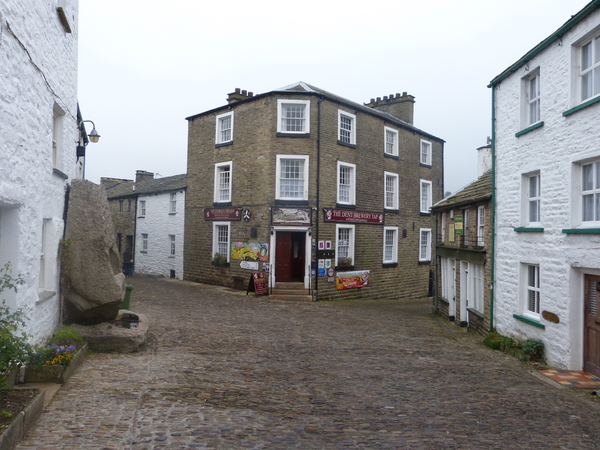
The requirement for high speed steam travel when the line was constructed was for gradients of no more than 1 in 100. When you consider how dramatic the terrain is in this part of the country, it led to some impressive feats of engineering to ensure this. The section of line between Settle and Blea Moor is almost entirely 1 in 100 and it was given the nickname the Long Drag by drivers. As the train travels across the Ribblehead viaduct, Blea Moor comes into view and the dramatic nature of the land is fully revealed as the railway shrinks into the tunnel that engulfs it. Blea Moor tunnel, which is almost twice the length of the second longest on the line, is 2,629 yards long and is 500 feet below the summit of the moor.
Shortly after leaving the tunnel you arrive at Dent, which at 1,150 feet is the highest station on the National Rail network in England. The line was built first and foremost as an express mainline to Scotland with local train requirements of less importance. This resulted in many stations being built a considerable distance from the communities they were meant to serve. Dent village, three miles from the station, is no exception and it’s advisable to book a cab if you wish to visit (Ladycab Taxis: 01539 735086).
The historic village, with crooked streets, cobblestone roads and an imposing 12th century church has accommodation at the George & Dragon (above) in Main Street (www.thegeorgeanddragondent.co.uk; 015396 25256). This splendid hostelry, run by Gary and Susan Kirby, has 10 letting rooms, excellent food in bars and restaurant, and the full range of Dent Brewery beers: Ale, Golden Fleece, Station Porter, Aviator, Ramsbrau and Ramsbottom. The pub was built as a mill in the 1700s but was never used and became a hotel. The restaurant area was once a buttery while the pool room was a former butcher’s shop. In the 1870s, the inn had its own brewery, while Dragon Cottage next door was a stable block.
Make sure you visit the local Heritage Centre (www.dentvillageheritagecentre.com) that traces the history of local people in the area over several centuries. It covers the life of Adam Sedgwick (1785-1873), Dent’s most famous citizen. From humble beginnings, he went on to university and eventually became a Professor of Geology and the leading expert in his field in the country. A granite memorial commemorating his life and work stands in the Market Place opposite the George & Dragon. The centre also has a working model of the Settle-Carlisle line.
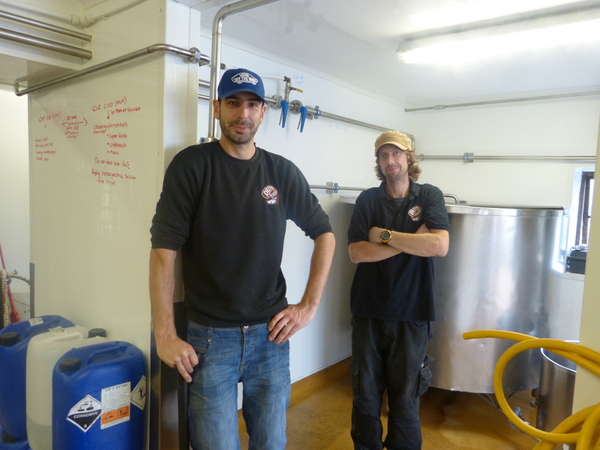
Dent Brewery, mid-way between the village and the station, is so remote that most people wouldn’t consider placing a business there. It’s a 40 minute drive to the nearest motorway and it’s often cut off in winter. But Dent has been brewing successfully for 20 years and supplies its beers throughout Cumbria and via wholesalers to Carlisle, Liverpool, Manchester and Blackpool. They’re also available in selected Wetherspoon’s outlets.
The brewery stands well back from the road, up a narrow track and next to a whitewashed farm house. Simon Winder, in charge of the brewery, says they planned to relocate several years ago but when Judith and Paul Beeley from Keighley in Yorkshire bought they farm house they eventually took over the brewery as well. I’s remained on its original site ever since. Paul studied chemistry at university and was a keen home-brewer, so owning a brewery was a logical next step.
Dent produces 30 barrels a week, more during the summer months when Cumbria bursts with thirsty visitors. Simon Winder (let, above), who brews with another Simon named Calvert, a former landscape gardener, has a conventional mash tun and copper brewhouse that feeds five fermenting vessels. The brewing vessels are custom-built and were installed by the Beeleys 10 years ago when they took over the brewery.
Brewing liquor comes from a spring in the fells that surround the brewery and bubbles up through limestone. The two Simons used Pearl malting barley as their base grain and add cara, wheat, crystal, roasted barley and lager malt, depending on the recipes for individual brews. The hops used are Slovenian Bobek, East Kent Goldings, Fuggles, German Hallertauer and Northdown. Aviator is the main beer brewed and it accounts for 50 per cent of sales.
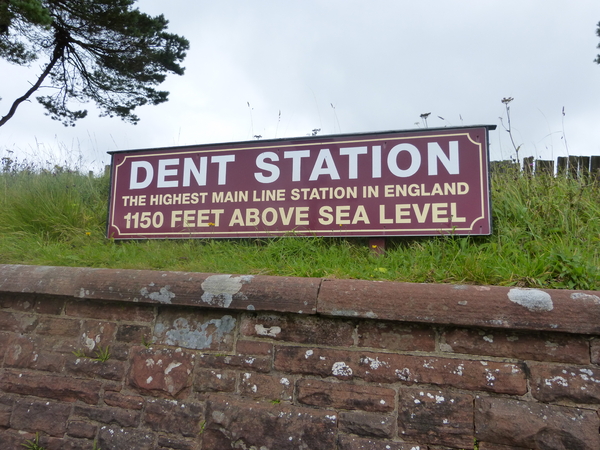
If you want to remain close to the railway, the station rooms at Dent have been renovated for self-catering accommodation (www.dentstation.co.uk/accommodation.php) along with the snow hut, built to house navvies during construction and used over the years for workers to clear away winter snow. It’s just a few yards down the track from the main building.
Further north you arrive at Appleby, a town overlooked by a Norman castle whose famous gypsy gathering has its earliest recording in the 12th century. The station has a water tower, a rare site at non-preserved stations, but the regularity of steam excursions on the track makes it a useful structure. The town is one of the largest on the line and if you were in need of a drink or a bite to eat, the Midland Hotel (www.themidlandhotelappleby.co.uk) 25 Clifford Street is a few yards below the station. The pub is under new management and has been recently refurbished. There are three hand pumps serving ales from Cumbrian micro-breweries as well as five en suite rooms. The Golden Ball in High Wiend is a traditional side-street local that serves Marston’s Burton Bitter and guest beers.
Edging ever closer to Carlisle, you arrive at Lazonby, also home to a line side Midland Hotel (01768 898901), built to serve the Midland Railway. It’s a traditional, family and dog-friendly pub situated beside an arching railway bridge in a broad, white building. It serves Greene King IPA and a guest beer and there’s a snug area for evening meals.
There’s only one final stop at Armathwaite before the line terminates in Carlisle. The station used to be known as Carlisle Citadel and once served seven different railway companies. It has a grand roof arching over the track, with buildings in neo-Tudor style. The city has a proud history. It was built by the Romans to serve forts along Hadrian’s Wall. History is all around: as you leave the station you’re immediately greeted by the spectacular city walls.
After the gruelling journey over the Yorkshire Dales, through the Pennines and Cumbria up to the Scottish border you’ll be looking for somewhere to enjoy a drink and the King’s Head in Fisher Street (www.kingsheadcarlisle.co.uk) is only a short walk through the city centre. It’s handy for both the cathedral and the castle, and it’s reported that ale was served on this site as long ago as the 10th century. Inside are beautiful wood beamed rooms with walls adorning old pictures of the city and outside is an explanation as to why Carlisle wasn’t featured in the Domesday Book. The beers served include Yates Bitter and guests: a well-deserved pint before the long trip back. And the railway company caters for all needs: it works with the Eden Brewery in Brougham to produce the bottled Wyvern Ale for passengers. Crack one open as you cross the Ribblehead Viaduct and toast this masterpiece of architecture and engineering.
*Regular trains on the line are diesel-hauled. For more information about the railway and steam train events see www.settle-carlisle.co.uk.
